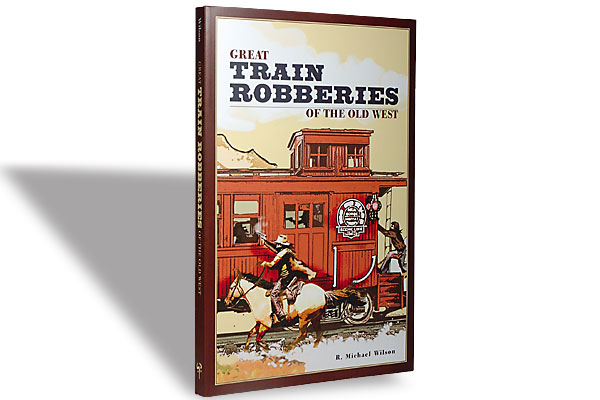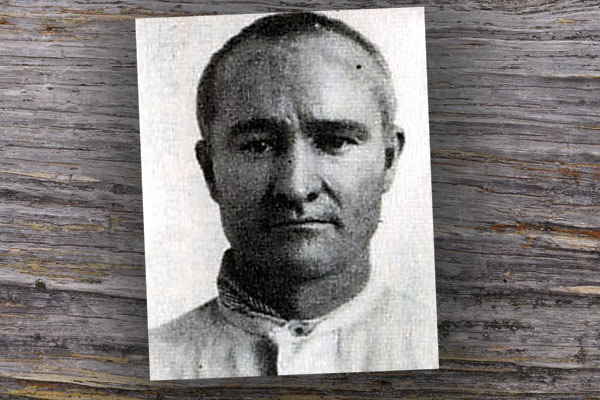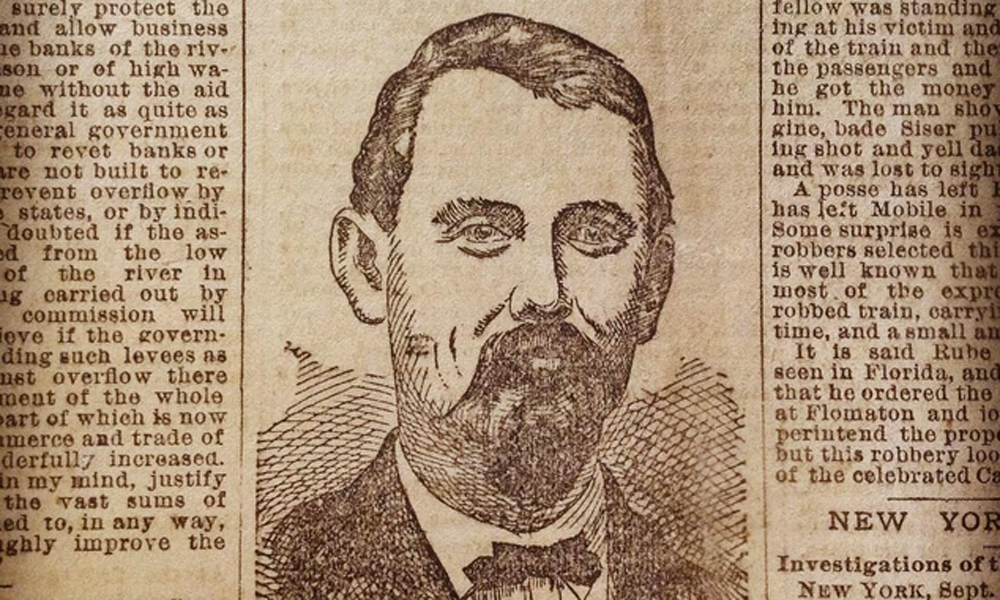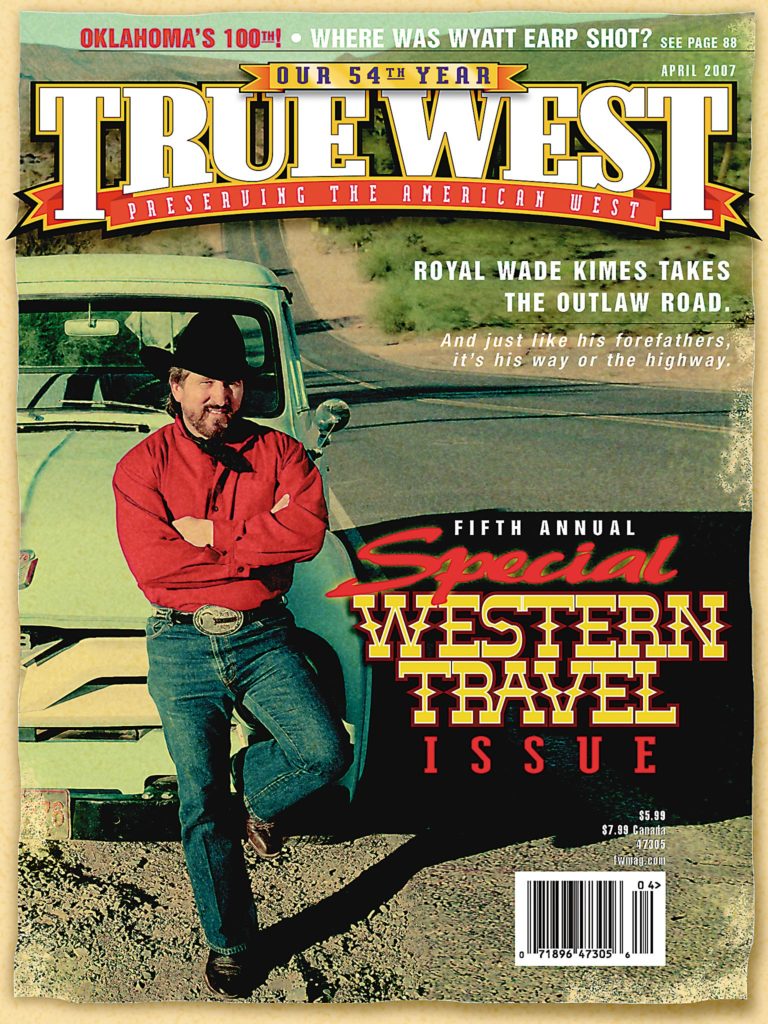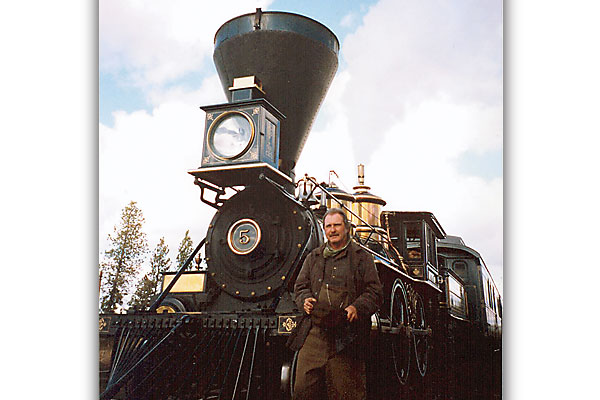
The producers of the movie Wild, Wild West were looking for some trains.
Not just any trains. One had to look like a post-Civil War locomotive hauling a special car for special agents Jim West and Artemus Gordon (hoo-rah!). The other engine—manipulated by the evil genius Dr. Arliss Loveless (hssssss!)—needed to somewhat resemble a huge combat tank.
But producers are Hollywood types, and they generally don’t know anything about railroad equipment.
So the movie makers called in the “Train Man.” Enter Jim Clark.
He told them how to bring rough drawings to life. He found the locomotives and the train cars. Clark showed them how to run the equipment (he did most of the work himself). He helped design the train stunts. And he oversaw all the railroad aspects of the flick.
Okay, so the film derailed. At least the trains were great. Thanks to the Train Man.
Jim Clark’s interest in trains goes back to his childhood, when he was interested in all things mechanical. By the early 1960s, he was racing Dodge and Plymouth race cars to make a buck. His rides usually had a train painted on the side, his logo at that point in time. And as he went from race to race, Clark usually stopped at every museum he could—especially those that had railroad exhibits.
That interest eventually got him a job at the fabulous Nevada State Railroad Museum in Carson City. Along the way, he learned everything he could about trains—how to set them up, how to operate them, how to fix them.
So by the mid 1980s, Jim Clark was ready to become the Train Man. Hollywood beckoned.
Now this wasn’t as farfetched as it might sound. Jim had been in front of the cameras a few times in the 1960s and had his Screen Actors Guild (SAG) card. He’d also done some work as a stuntman. He’d bought a lot of equipment over the years, including locomotives and cars. He’d even owned a couple of short line routes.
In 1985, he bought a company that restored trains for museums and put it on a different track, renting railroad equipment and expertise to movie producers. For the right price, he’d not only find the right locomotive and cars, but he’d also provide the rails and ties—and bring them to the shooting location. He’d help design the stunts (face it, everybody wants to blow up or otherwise destroy a train in their flick) and then carry them out himself. It was a novel idea—and it caught on.
Over the next nearly 20 years, Jim Clark was hired to do the train work on more than 200 productions—including TV shows such as Dr. Quinn, Medicine Woman and MacGyver. Among his movie credits are Throw Momma from the Train, Eraser, Switchback, Under Siege 2, Lethal Weapon 4, Money Train and, of course, Wild, Wild West. In 2005, his work was an important part of the Steven Spielberg mini-series Into the West.
See, he really was (and is) the Train Man. And his favorite gigs were (and are) Westerns. “The epitome of the Western image is a train,” Clark says. “You can’t separate the two, historically or in myth and legend.”
Wild, Wild West went beyond myth or legend. It was supposed to be a takeoff on the 1960s TV series, which was a sort of James Bond meets Bat Masterson mutation. The TV show had plenty of gadgets and gimmicks; the movie took that concept over the top.
Clark found the locomotive for the good guys’ train in the B&O Railroad Museum in Baltimore—an 1856 engine that hadn’t worked in 40 years. After he got the okay to use the piece, he and his crew had to restore its working parts—and create a few: this model did not originally come with brakes, for example, which just wouldn’t do for the movies. The renovation took some six months and cost around a half-million dollars, and was accomplished at the Strasburg Steam Engine shops in Pennsylvania. Then the engine was trucked all the way to Santa Fe.
As for Dr. Loveless’ (hssssss!) train, Clark suggested that the producers take a Southern Pacific caboose with a bay window and build on top of that base to create a bizarre tank-like engine.
Of course, modern movies use a number of devices to create a credible story. Those include miniature models and computer graphics, and the Train Man learned how to coordinate those effects with the full-sized wood and steel contraptions. It all makes it easier to
pull off unbelievable stunts—although producers still demand the impossible. In one case, Clark was asked to have a real train run off a trestle where the tracks had been destroyed. That would have been suicide for the train engineer, who just happened to be Jim Clark. He pointed that out; they let him try something else.
“It all comes down to preparation,” Clark explains. “You have to plan everything out to the smallest point. That way you can have an exciting shot that’s still safe for cast and crew.”
Planning has its limitations, though. The Train Man was working on the TV series The Adventures of Brisco County, Jr. The shot called for an actor to ride a horse at full speed toward a moving train and then pull himself aboard. The producers wanted the horse to be left in the dust—so Clark was supposed to open the steam throttles and speed away. Somebody forgot to tell the horse, however. The trusty steed galloped past its iron counterpart—take after take after take. “We finally had to exhaust that horse before the train could beat it,” recalls Clark. “You just never know how some of these things will play out.”
The Train Man’s business played out in 2001 when he sold all the equipment. But movie and TV-types still call, and he consults a couple of productions each year. He owns one of the most extensive railroad research libraries around. He helps out at some transportation museums. And he still loves to ride the rails.
For the Train Man, the journey continues, per usual, right on track.
CLARK’S TOP TRAINS
Rides for the Fun of It
Jim Clark loves to ride the rails. His particular favorites are lines that go through mountains with beautiful scenery (and frequent snow). Among the railroads that he recommends:
Denver & Rio Grande: Okay, so this is now called the Union Pacific, going between Denver, Colorado, and Salt Lake City, Utah. Clark refuses to acknowledge that, preferring to live the history of this great line.
Virginia & Truckee: This classic doesn’t really exist any more—at least for right now. But it’s the subject of a $40 million project to rebuild the V&T between Carson City and Virginia City, Nevada. Clark can’t wait to take a ride.
Durango & Silverton: This one has been used for several movies—including Butch Cassidy and the Sundance Kid—so it’s a natural for Clark’s list. He’s ridden this one many times, and he can’t get enough of the sweeping vistas and natural surroundings.
ON THE RIGHT TRACK
Jim’s Picks for the Best Train Movies
5. Union Pacific (Joel McCrea, 1939, 135 minutes): An action-packed film with Virginia & Truckee locomotives portraying Union Pacific & Central Pacific equipment in an epic about building the Transcontinental Railroad. Pure heaven and steel.
4. Emperor of the North (Ernest Borgnine, 1973, 118 minutes): The railfan’s most perfect film for accuracy, even if it is set in the 1930s.
3. Breakheart Pass (Charles Bronson, 1976, 95 minutes): Winter and a steam locomotive are art in motion—it’s the scenery in this one.
2. The General (Buster Keaton, 1927, 74 minutes): This magnificent silent film set against the backdrop of the Civil War depicts the true story of The Great Locomotive Chase. One of history’s best films ever.
1. The Great Train Robbery (Edison, 1903, 12 minutes): The film that started it all—crime, pursuit and retribution, all on the rails and trails of Orange, New Jersey. Plus the most innovative and technically advanced film to that time—with techniques still in use today.


